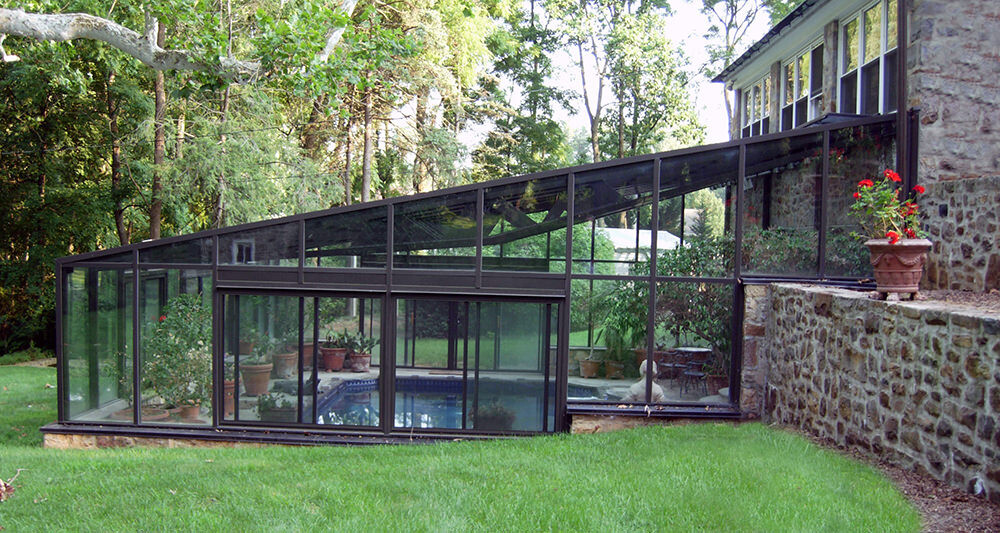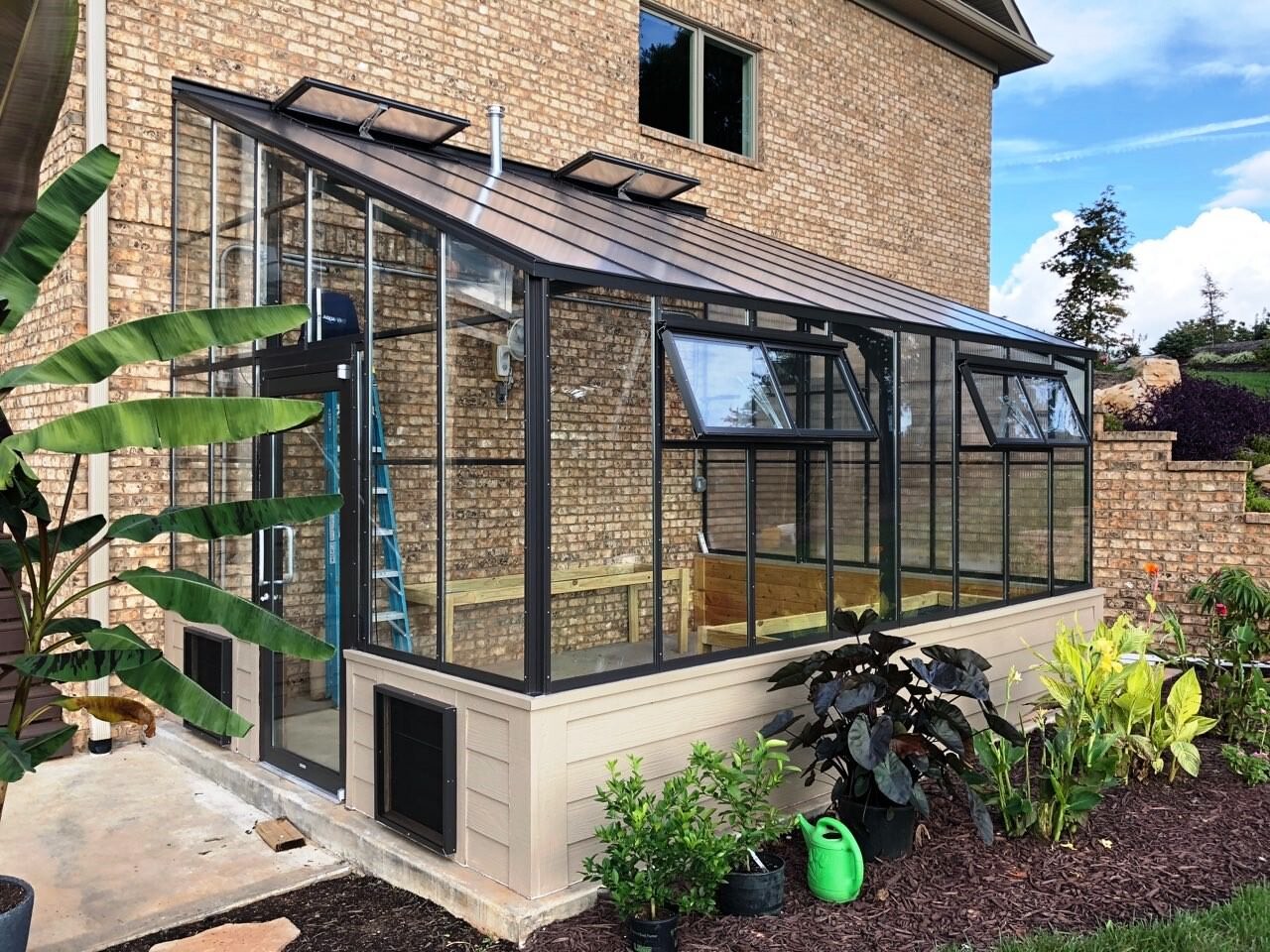Lean-To Greenhouses
Customizing your lean-to greenhouse: Design considerations
Transform your gardening experience and extend your growing season with the magic of a lean-to greenhouse. Whether you're a seasoned gardener or a green-thumb novice, the allure of harvesting fresh vegetables year-round or cultivating exotic plants has never been more attainable. With "how to build a lean-to greenhouse against a house," you can maximize your space efficiently, attaching a vibrant garden oasis directly to your home. Lean-to or attached greenhouses offer a seamless blend of functionality and aesthetic appeal, making them a perfect addition to any home.
Discover the "advantages of attaching a greenhouse to your home" as we delve into cost-effective solutions that do not compromise on quality. From "DIY lean-to greenhouse plans for beginners" to innovative "ventilation tips for attached greenhouses," this guide is your one-stop source for all things related to lean-to greenhouses. Whether you're pondering "what are the best plants to grow in a lean-to greenhouse" or "how to ensure effective temperature control and ventilation," our comprehensive coverage will prepare you to create and maintain a flourishing garden space attached to your home.
Join us as we explore the myriad benefits of lean-to greenhouses, including enhanced accessibility, improved energy efficiency, and the sheer joy of "enjoying gardening all year round with a lean-to greenhouse." Whether your goal is to embark on a sustainable living journey, enhance your home's aesthetic, or simply nurture a passion for gardening, a lean-to greenhouse can turn your dreams into reality. Get ready to transform your outdoor space with a beautiful, productive, and environmentally friendly lean-to greenhouse.
Understanding the structural requirements of a lean-to greenhouse
Designing your lean-to greenhouse involves careful planning and consideration of several factors to ensure that it not only serves your gardening needs but also complements your home’s architecture. A well-designed lean-to greenhouse can provide an efficient, productive space for growing plants year-round while also adding aesthetic and monetary value to your property. Here are key considerations and steps to design your lean-to greenhouse and how to build a lean-to greenhouse against a house:
Why choose a lean-to greenhouse for urban gardening?
- Extended Growing Season: By controlling the internal climate, gardeners can grow a variety of plants year-round, regardless of external weather conditions.
- Energy Savings: The proximity to the house and the shared wall provides natural insulation and heat transfer, which can reduce energy costs.
- Aesthetic Appeal: A well-designed lean-to greenhouse can enhance the overall appearance of the home, providing a lush, green space that's visible and accessible.
Lean-to greenhouses offer a practical and efficient solution for extending the growing season, especially in temperate climates. They embody a blend of functionality, convenience, and sustainability, making them an increasingly popular choice among modern gardeners and homeowners looking to maximize their gardening potential with limited space.
A lean-to greenhouse is unique because of:
- The ease of connecting to an existing structure’s utilities, such as gas lines, plumbing, and electrical, makes it a popular style among homeowners.
- You maximized heating benefits from having a shared wall with your existing structure, making it an ideal extension of your living space.
- The ability to tie in with existing architecture makes its style a great choice to complement your home’s design.
- The convenience of having your growing space steps away helps you achieve your gardening goals with ease.
Custom Lean-to Greenhouses
If you are ready to add a lean-to greenhouse to your home, we can help you design a structure that matches or complements your existing architecture and landscape. Whether you plan to use your custom lean-to for gardening, enclosing your pool, or adding additional living space to your home, we can customize your greenhouse to any specifications to meet your needs.
Economy Lean-to Greenhouse Kits
We also offer a variety of economy greenhouse lean-to kits for quick assembly and easy setup. An intelligent way to extend your growing season, start seedling, grow herbs for your kitchen, and overwinter your plants, our quality home lean-to kits will have you growing in no time. These kits are great for small spaces, hobbyists, and areas with high solar heat gain. Having one wall of the greenhouse attached to your existing structure reduces the overall solar exposure from transparent surfaces, making lean-to styles ideal for sunny and Southern climates. Hobby gardeners will appreciate the convenience of having access to water and power directly from your home. These styles also work well for rooftop greenhouse gardening or having a separate seed starting space to supplement your more giant greenhouse.
Whether your growing space is large, small, or somewhere in between, the benefits of having a home greenhouse are numerous. Our lean-to greenhouse kits are an excellent way to explore the advantages of protecting your germinating seeds from harsh and unpredictable weather, avoiding sub-soil pests like wireworms, slugs, and pill bugs, and airborne pests such as cabbage moths and birds, or simply keeping plants safe from the withering and powerful sun of mid-summer. These greenhouses can be outfitted as a hothouse, warm house, or cool house to suit your growing needs, just as freestanding models can.
Call our greenhouse experts today to select your perfect lean-to greenhouse kit, or choose the kit that’s right for you directly from our website. The Gothic Arch guarantees a quality greenhouse that withstands the test of time and is your assurance that the perfect greenhouse for you is just around the corner. We are happy to assist with any questions you may have to help you grow today!
Call Gothic Arch Greenhouses’ team of specialists today at 1-800-531-4769.
Aluminum Lean-to Greenhouses
If an affordable lean-to greenhouse kit is what you’ve been looking for, this greenhouse was made for you! Extend your growing season with this top-quality gable-style greenhouse. An excellent choice for hobby growers to serious gardeners, chefs, schools, or any group that requires a garden space that takes up the minimum room while maximizing
Click for More InfoCustom Attached Greenhouses
Adding a lean-to greenhouse to your home, business, community center, or institution is a great way to increase your living space or create an ideal growing environment for your plants. Our Traditional Greenhouse, Cottage Greenhouse, Pacific Greenhouse, and Cape Cod Greenhouse are all available as attached greenhouse styles.
Click for More InfoSolar Garden Custom High-End Attached Sunroom
Solar Garden Custom High-End Attached Sunrooms are the best quality greenhouses. Solar Gardener lean to greenhouses are simple to install, easy to upgrade, and can be designed to meet virtually any building code. In addition, these units can be customized with numerous accessories and decorative options. Unlike permanent greenhouses, they are able to be moved if necessary..
Click for More InfoFreestanding Lean-to Glass Greenhouse
Freestanding Lean-to Glass Greenhouse features a sleek sloping roof design. Use Freestanding Lean-to Glass Greenhouse as your perfect year-round growing environment or as a garden room/backyard lounge. High-quality aluminum profiles and 4mm tempered safety glass construction make for a very durable, long-lasting
Click for More InfoCommercial Greenhouse Lean-To
The G Series Lean-To Commercial Greenhouse seems to offer an innovative and space-efficient solution for modern crop production. This greenhouse design is particularly suitable for those with limited space who want to maximize their usable area. Let's delve into the features and benefits of this greenhouse:
Click for More InfoCrystal Blend Lean-to Greenhouse Kit
Crystal Blend Greenhouse Kits are an ingenious greenhouse offering the gardening enthusiast a precise balance of 2 advanced polycarbonate panels and a strong, durable, rust-resistant aluminum frame, perfectly designed to fit smaller spaces so you can start growing earlier and continue growing later. The twin-wall roof panels block up to 100% of harmful UV rays and diffuse direct sunlight; the...
Click for More Info

